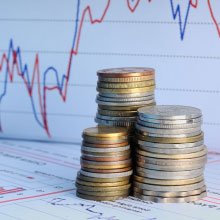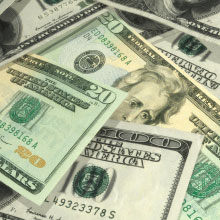By MoneyMorning.com.au
Today, we’re back to giving you some actionable advice…rather than just throwing a few thoughts at you.
Yesterday we explained that China’s economy wasn’t going to be a global economic saviour. Instead, it’s about to head towards an economic death as it shifts directly from a producing economy to a consumer economy.
But what you need to know is how to make a quid from this shift…or whether you should ignore it. We’ll show you our idea in a moment. But first let me fill you in on the background story…
New Model for France
‘I want a new model for France where success will be admired, where talent and merit will be rewarded. I want a new model for France, where those who’ve worked all their lives can live through their retirement without being a burden on their children’ – French President, Nicolas Sarkozy (as quoted by the Australian Financial Review)
We wonder if M. Sarkozy listen to Martin Luther King Jr.’s ‘I have a dream’ speech before delivering his own garbled (and much less inspiring) effort.
We hear the same message time and again from world leaders about rewarding talent. But you know the saying. They like to talk the talk, but they never walk the walk.
Why?
If you leave the market alone, it could go in any direction and do all sorts of impulsive and amazing things.
This is what markets do every day and it works perfectly…as long as busybody bureaucrats keep their noses out.
But that’s the thing, the maniacs who seek political office do so because they want power. The power to change things and interfere. You don’t seek high office just so you can sit there and not fiddle with things.
But when bureaucrats fiddle, it’s to curry favour with parts of the electorate. And that will always create distortions and bad investments within an economy.
But not everyone agrees with us. In fact, it puts us in the corner opposite to David Thomas, an expert on the BRIC nations (Brazil, Russia, India and China). He spoke at the After America conference in March.
At the conference, he told the crowd:
‘I think one of the things about China — and everybody in China always says to me — is that if you want to know where China is going, just read the five–year plan because it tells you. There’s no surprise. They don’t miss targets that they set in their five–year plan. This particular five–year plan that was just released last year is one of the most colossal documents they’ve ever produced.
It’s extremely detailed. It took years to create. It involved debate and discussion at every level of the government and I think it’s one that we can rely on quite well. It’s also a bit of a turning point because after 30 years of sort of growth at any cost type activity, now they’re actually turning their economy into a modern–type economy. I think looking at the five–year plan gives us a lot of clues as to where the future opportunities are doing to be, both from a business perspective, but also as investors.’
David Thomas urged the crowd to read China’s five–year plan. He guessed that no one would.
And we won’t either. We see little enjoyment in reading the rambling words of maniacal clones who genuinely think they can steer the Chinese and global economies as they see fit.
But it is true, some Australian industries will gain from the shift to Chinese consumerism. David Thomas listed a whole bunch of them. He included tourism and financial services.
Trying to Ride China’s Consumer Dragon Won’t Work
But we’d advise caution about trying to ride the Chinese consumer dragon. Because if you think it will be a repeat of the Resources Boom, you could be in for a nasty surprise…
The easiest (and frankly, most obvious) trade is to make the following judgement: China bought Aussie resources when it was building its infrastructure. And so China will buy lots of Aussie services when it becomes a consumer economy.
Hold fast. Investing isn’t that easy.
For a start, Australia isn’t called the ‘Lucky Country’ for nothing.
It’s lucky that it contains some of the biggest and most wide-ranging mineral and energy deposits in the world. Having a natural resource doesn’t take skill. Of course finding it and digging it up does take skill.
But if a country doesn’t have natural resources such as iron ore, copper, oil, uranium or gold, there’s not much anyone can do about it.
Another speaker at the After America conference was global strategist at Societe Generale, Dylan Grice. When he got back to the U.K., he wrote this:
‘I had a great time in Oz: fantastic people, wonderful atmosphere, and a truly beautiful country. But I felt more relaxed when Australians called themselves the ‘lucky country’ with their typical honesty, realism and humility. Now that it’s been upgraded to the status of ‘miracle’ I’m worried.’
Grice was referring to a book by journalist George Megalogenis, where he talks about the ‘Australian miracle’.
Of course, having a bunch of resources isn’t a miracle. It’s luck. Australia was dealt a good hand in the resources department thanks to Mother Nature, rather than skill. But what about the consumer services sector? How do things stack up for the Aussie economy there?
That’s a completely different kettle of fish.
Yes, Australia has a consumer services sector, but so does every other country.
Yesterday we wrote about competitive advantage. China’s economy has a competitive advantage over others due to a large population and cheap labour.
Exactly where is Australia’s advantage in the consumer services industry? To use David Thomas’s two examples — tourism and financial services — where does Australia stack up compared to other nations?
First tourism. Let’s compare flight times between Beijing and Sydney, and Beijing and San Francisco…both are roughly 12 hours. So no advantage there.
And financial services? We hear talk that many would like to make Sydney an Asia financial hub…surely if that happens it will attract the Chinese, right?
Clearly those who think that have never heard of a place governed by China since 1997…we’re talking about Hong Kong. A city that already has one of the most developed financial markets in the world.
Why would China leapfrog Hong Kong, where it can set its own rules and regulations, to support a finance industry in a foreign city that’s a 12-hour flight away?
But what about the idea that Aussie services companies are poised to strike when China’s consumers unleash themselves on the world? We ask, ‘Where are all those services companies now?’
If they can’t get their act together to sell to the 5.5 billion people in the world who aren’t Chinese, why assume they’ll do any better when 1.5 billion Chinese start buying?
You only have to look at the weak online efforts of most Aussie retailers. Aussie services companies are totally unprepared for globalisation and exports.
The Best Investment Idea for the Next Eight Years – Won’t Rely on Chinese Consumerism
All that explains why we’re ignoring this line of investment completely. It’s too obvious and it’s a darn bad idea.
Instead, we’re looking where few others dare look. Where exactly? Africa and Europe. And we’re not wasting our time on waiting for the Chinese consumer to start spending, either.
Because if you wait for that, sure, it could happen soon…but it may never happen. And if you’ve been twiddling your thumbs waiting to make a killing from the Chinese consumer, you’ll have wasted a lot of time and many good opportunities.
So our advice is this. Forget the Chinese consumer for now. If it ever happens, you don’t need to be in the trade from day one. You won’t miss much if you turn up late.
And rather than focus on pie–in–the–sky investments, we’re looking at companies that are searching for and producing things industries and consumers need right now — energy.
If you want a trade that could set you up for life, here’s our advice…
Punt on stocks where Aussie companies have plenty of skill and knowledge. Companies that will see a strong demand for their products whether China becomes a consumer–driven economy or not…we’re talking about oil and natural gas.
That’s where Australia has a competitive advantage.
It’s the trade for 2012. And as we see it, it’s the trade for the rest of the decade.
Cheers.
Kris
Related Articles
The Conference of the Year “After America” DVD
Why You MUST Speculate
Disruptive Technology Stocks For Smart Small-Cap Investors

Why China’s New Consumer Economy Won’t Give You the Trade of the Decade
 Tradervox (Dublin) – The euro continued with its decline for the fifth day after a report from the region showed that the region’s manufacturing and services industries contracted in the month of April. In addition to this report, the continuing political situation in the region has continued to weigh down on investor confidence with France and Greece expected to hold elections this weekend. Moreover, investors are worried about the worsening economy and they are warning about the region’s ability to cope with the debt crisis.
Tradervox (Dublin) – The euro continued with its decline for the fifth day after a report from the region showed that the region’s manufacturing and services industries contracted in the month of April. In addition to this report, the continuing political situation in the region has continued to weigh down on investor confidence with France and Greece expected to hold elections this weekend. Moreover, investors are worried about the worsening economy and they are warning about the region’s ability to cope with the debt crisis.
 The dollar is going to stay on top through the 21st century for two reasons: The weakness of competitors and the political institutions of America.
The dollar is going to stay on top through the 21st century for two reasons: The weakness of competitors and the political institutions of America.



